Best of the MASS MoCA Galleries, January 2019: An Inexpert Opinion
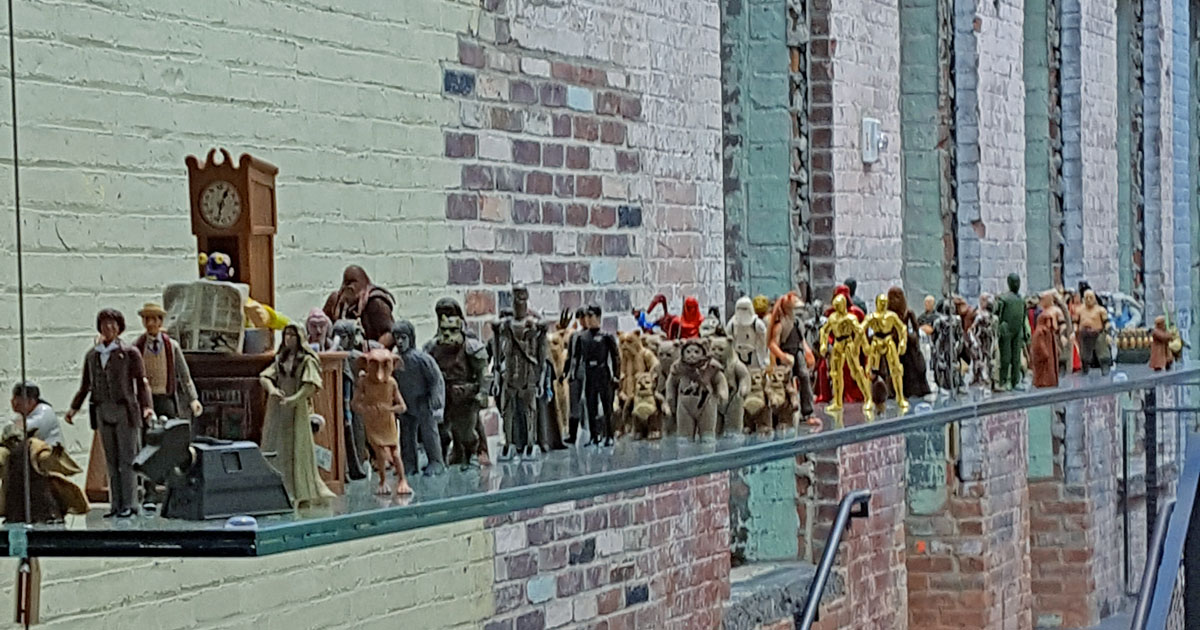
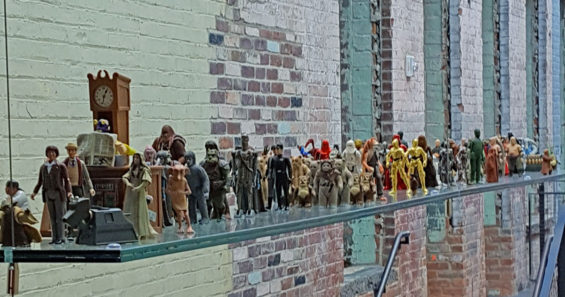
I feel for folks who don’t live in proximity to world-class museums—I really do. Even in my remote little neck of the woods, I’m 40 minutes or less from a few biggies, including MASS MoCA in North Adams. Since I have a strong preference for contemporary art—generally, the more offbeat and provocative, the better—I make the trip here at least three times a year. On my most recent trip in January 2019, there were a few exhibits I’d seen the previous time around, and several that were brand-new to me. And a handful of those are worth revisiting, even if only on my computer screen.
Before I get to it, let me say that I am not an art critic, nor would I even consider myself an art expert. I’m just a person who works in other art forms—mainly writing and jewelry design—and loves visual art. For me, visual art is creative inspiration, an opener of doors to other realms of imagination.
So while my handful of art history and appreciation classes in college hardly qualify me to be a tastemaker, they do give me a healthy sense of what I like and don’t like, and inform my personal interpretation of what I see in the galleries. Your own interpretation may be very different; you may, in fact, completely disagree with my take. You might even look at the metal sculpture Lightning in Stag’s Glare, one of the museum’s permanent pieces, and think it resembles something other than turds dotting a lawn. If you do, I laud your open-mindedness, and wish I possessed your superior art aesthetic.
But that potential for various interpretations and reactions is what makes art so exciting, right?
Here are my top picks from what’s on display in the galleries of MASS MoCA right now:
The Lure of the Dark: Contemporary Painters Conjure the Night
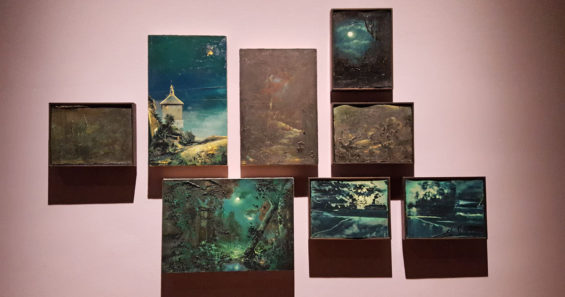
More than a dozen painters’ work was curated to create this exhibit, which takes up much of the second floor of the main building. Moody and evocative, Lure presents not only the dark and its fragmented illumination by the moon, stars, and street lights, but the mysterious shapes and beings that spring to life along its shadowy edges. Although I usually prefer photography to painting, I enjoyed Lure’s varied takes on the dark—some splashed with bright colors, some a more traditional chiaroscuro approach—and the juxtaposition of different art styles and techniques.
Rachel Howard, Paintings of Violence
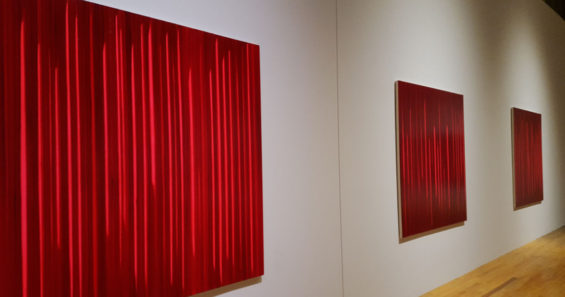
In the intro placard, the artist says that she sought to explore not the explosive, hot-blooded violence so common in today’s news cycle, but a more sinister, calculated form of violence. Howard’s process hints at this methodical nature—over several months’ time, she applied strips of red paint over each other and a pink canvas to create dimensional surfaces, with bits of the underlayer peeking through. All of the paintings are a tweak on the same technique and theme.
Perhaps because they repeated the same theme, but more so because each of the paintings evoked torn flesh, I had a visceral, emotional response to this exhibit. This was doubled at the end, where the artist’s towels, stained crimson from wiping her tools, were stacked in a neat pile, like the world’s tidiest murder scene. Paintings of Violence made me think, as the best art usually does.
Jenny Holzer, Redaction Paintings & Other Works
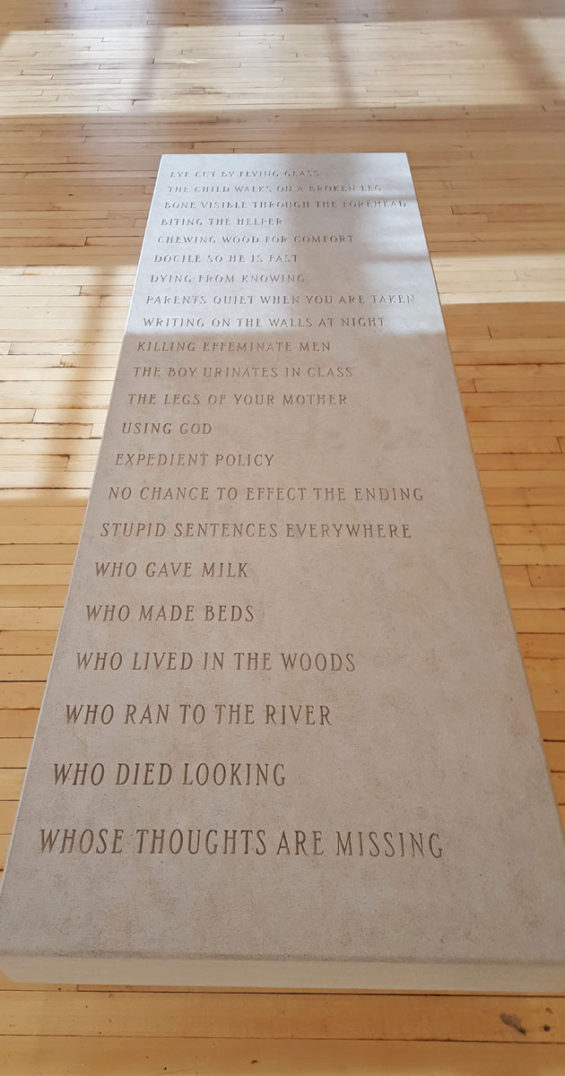
While Liz Glynn’s The Archaeology of Another Possible Future got the lion’s share of recent MoCA press, in part because of all the real estate it occupied in the galleries, that exhibit pales in comparison to Holzer’s multiroom work about wartime and the extraordinary lengths humans go to in order to justify, hide, or even celebrate their actions.
Holzer’s Redaction Paintings, with their heavily blacked-out narrative of interrogation, torture, and death at facilities like Guantanamo Bay, left me staring, gape-mouthed, at the walls for what seemed like hours. I was also struck speechless while viewing Lustmord Table, a tabletop arranged with (ethically sourced) human bones meticulously arranged by size and type—a biting commentary on the Yugoslav Wars, where “sexual violence against women and girls was used as a strategy and a weapon.” These and Holzer’s word-chiseled stone benches and news ticker–like arcing LED panels mix elements that are common and unthreatening in our everyday environments with eye-catching, often shocking truths.
Laurie Anderson, The Chalkroom
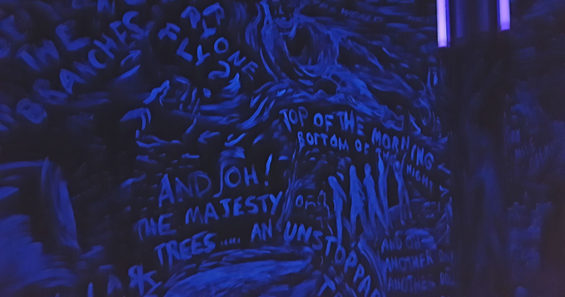
Although she’s considered one of the premier multimedia artists of the current era, I’m often conflicted when viewing the impossibly prolific Anderson’s work. Some is oddly thought-provoking. Some is just plain odd. I don’t always have a fully realized interpretation of what I’m seeing, but I can say this about Anderson: she’s never dull.
I haven’t gotten to experience the virtual reality portion of Anderson’s exhibits—they’re always booked when I’ve visited—but of the installations on exhibit, The Chalkroom seemed to be the standout. A little bit creepy, a lot mesmerizing, and somewhat uplifting, the installation features glowing white words and drawings scrawled over the walls, floors, and ceilings of a pitch-black room. They’re interesting enough to look at on their own, but you can get a feeling for what it’s like to see them flying through a VR headset on Anderson’s website.
There’s a hush that accompanies entering the room, and not just because it takes a few moments for the eyes to adjust. There’s a limbolike feeling to The Chalkroom that begs for comprehension. For me, it never quite came, but I was happy just to spend a few minutes in Anderson’s parallel universe.
See what’s on view now and what’s coming up at MASS MoCA.